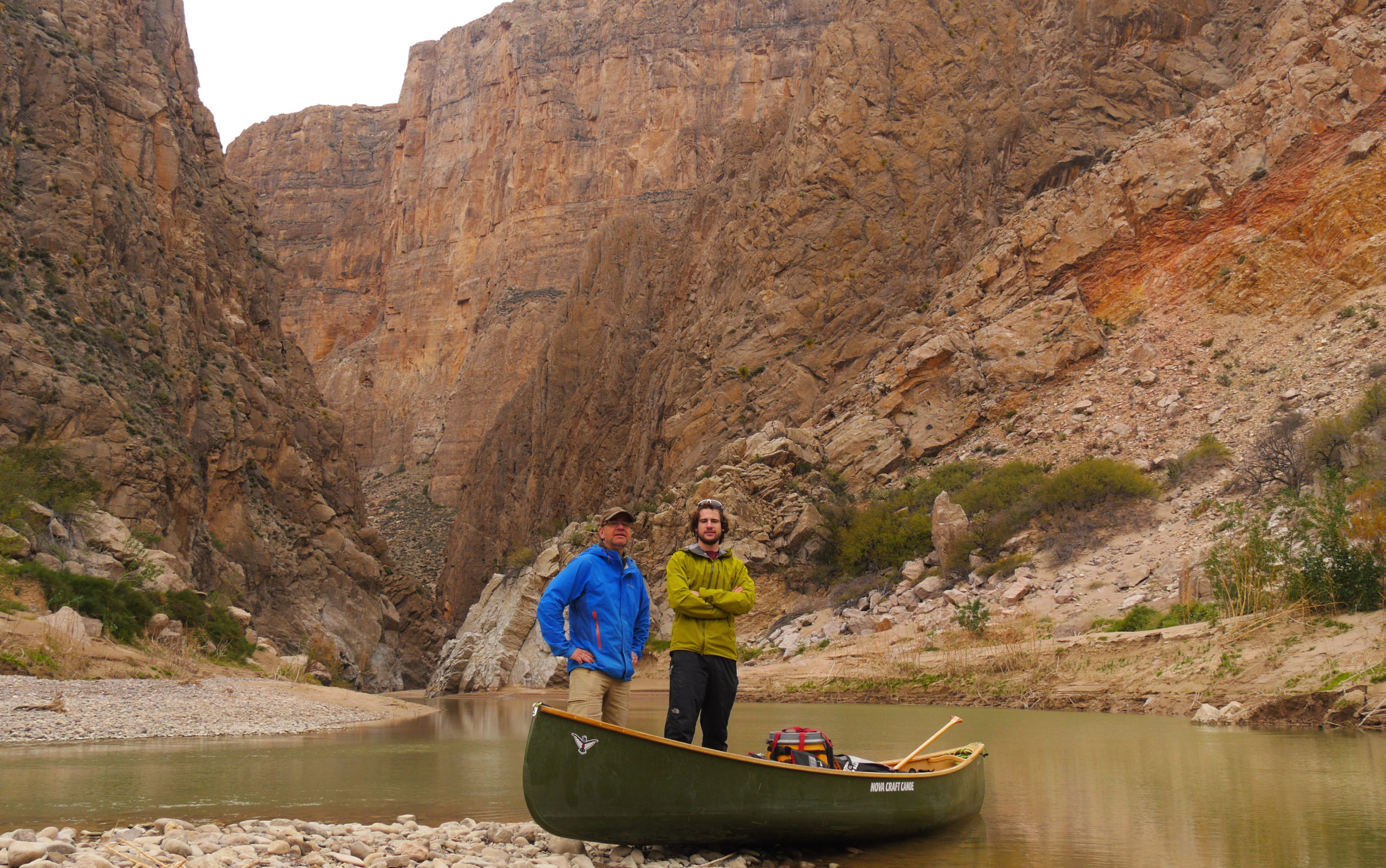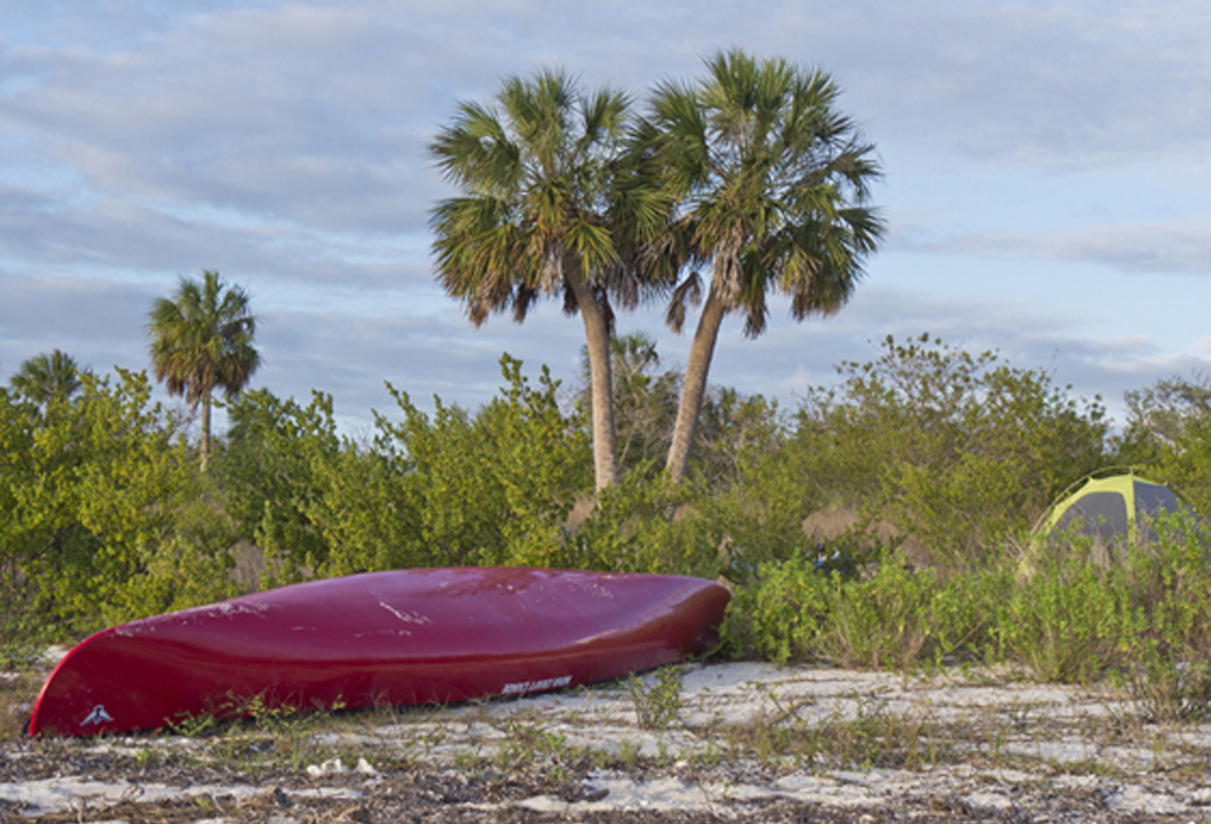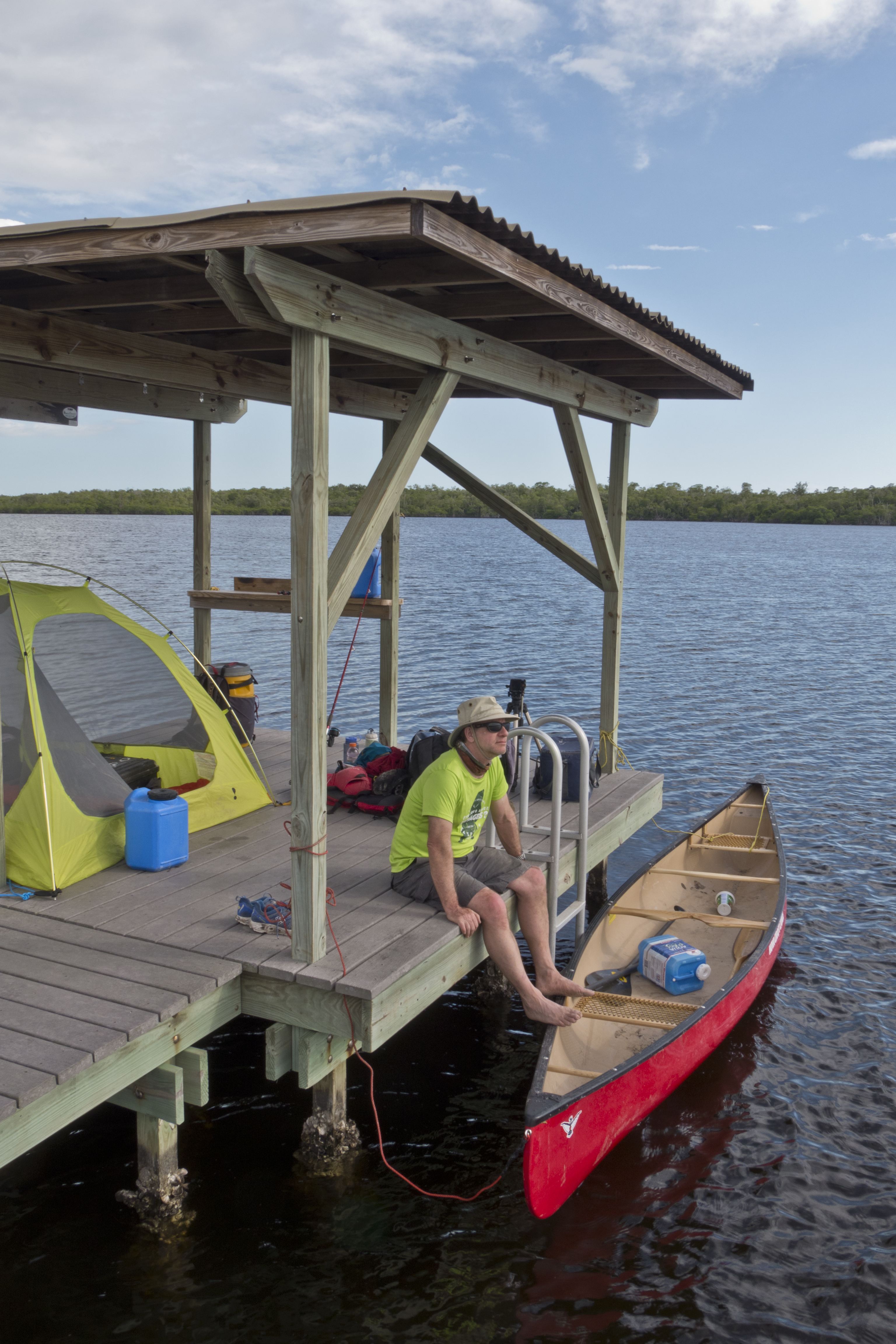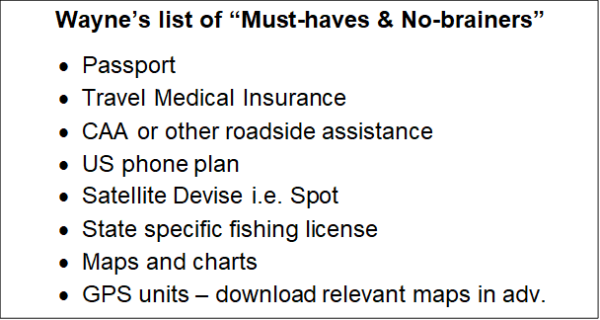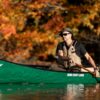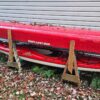Nova Craft ambassador Brad Jennings has had quite the “off-season”. He recently returned to his home in northern Ontario after completing major trips in Florida and in Texas, back to back.
rowing up paddling and camping in Ontario myself, I’ve been spoiled for choice. With millions of lakes, rivers and 72 designated provincial parks, there’s a lifetime worth of trips right here in my home province, let alone in Canada generally. With so much to do and see here, travelling in other countries for the purpose of backcountry paddling hasn’t been a priority for me. But I was intrigued to hear more about Brad’s trips and to learn a few things about what it’s like tripping in the states. I arranged to speak with Brad and his father, Wayne Jennings, who together form the duo behind the outdoors blog Explore the Backcountry. Below are excerpts from our conversation and some of the insights they shared with me.
Where in the US have you traveled to for the purposes of backcountry paddling and camping?
Wayne – Together we’ve done trips in the Adirondacks (New York), the Everglades (Florida), and the Rio Grande (Texas). Brad did the Rio Grande for a second time this year. We’ve also done some paddling in the Florida Keys, although mostly just day trip stuff.
Brad – I’ve also competed in adventure racing throughout several US states but when you’re racing you’re paddling 120 km in 12 hours, which is a totally different experience. So I’ve paddled in multiple states but have only really experienced the backcountry in the three mentioned.
What interested you about tripping in the US generally – why did you initially decide that you wanted to plan a trip in the US?
Wayne – The original inspiration is just the fact that it’s cold in Canada in the winter and we want to paddle all the time. Planning trips in the southern states give you an opportunity to extend your paddling season.
Brad – I think most paddlers can agree they get cabin fever during the winter months and winter camping can only quell that so much. So we started seeking areas that were feasible in terms of driving distance that we could paddle without worrying about snow. We got the idea for the Everglades trip after a family vacation to the Keys. Then the inspiration for the Rio Grande trip was that Wayne and his father, 36 years ago, paddled the Rio Grande and I grew up hearing tons of stories about that.
So this is the second iteration of the father/son Rio Grande trip.
Brad – Exactly. I grew up hearing about it and there’s this one photo framed in my dad’s basement of him and my grandfather on the Rio Grande with this huge canyon wall behind them and I used to think it just looked so cool. It’s such a unique environment. In Ontario we’re generally a fairly flat province without a lot of topographical relief so the concept of paddling in the canyons of Mexico and Texas was quite enticing.
Can you tell me a bit about your most recent excursions in the US? Let’s start with Florida. How long was the trip? Where did you start & where did you finish?
Brad – On our first trip to Florida, a couple years back, we had paddled the northern part of Everglades National Park, which is called the Ten Thousand Islands. That area is really gorgeous because it’s littered with these big white sandy beaches and a bunch of little islands. We were really into the idea of paddling from beach to beach for days on end. So we spent about a week of paddling through a mixture of Oceanside beaches and interior rivers, looping around the coast and back to Everglades City. In March, on our second trip to the Everglades, we did the southern section, starting and finishing at the port town of Flamingo.
We had a bit of a late start the first day and got stuck with really high winds and low tides. They were gale force winds so they were coming off the water at like 60-70 kms/hr. There was a small craft wind advisory in effect but the park rangers looked at us and said “Ah yeah you guys’ll probably be alright. You look like you know what you’re doing” cause we had all of our nautical charts, tidal charts, gear and whatnot. Anyway the winds were so bad that we had to turn back and we ended up staying at that main campground for the first night. Then we started over: we got up bright and early the next day and there’s a main navigation channel that takes you out to deeper water so we kind of huffed it out. Thankfully we had a fast boat (Nova Craft Cronje) and bent shaft paddles. We did a big 30km day to get around the cape. Tailwinds were just hammering us, whipping up like three foot waves.
That doesn’t really sound like a relaxing beach vacation.
Brad – Not to begin with at least.
One of the Jennings’ beach sites in Everglades National Park
Wayne – At the ranger’s station they provide you with a tide chart which shows you when its low tide and when its high tide based on your location. So you plan your route on that as well as on the wind and on the weathershore. And you don’t have to worry about any of that on Georgian Bay so it’s really a totally different mindset.
Paddling inland in the Everglades is quite like paddling the rivers and lakes up here: it’s fairly calm and fairly sheltered although open areas can get windy. But you’ve really got to be cautious on the ocean. Before you head out, you plan your route with the rangers and they’ll advise you if there are any issues or bad weather coming in. The thing about the ocean is, you’ve got to leave early every day. You’ve got to leave by 7 because around noon things start whipping up. You need to plan your route so that you’re paddling all morning and then have your afternoon at your site. Not only can the waves whip up but you’ve got tides to contend with. Near the beach sites, the water’s actually quiet shallow so even if you do tip, you can get yourself back in pretty easily because the waters usually only a few meters deep just off shore. But because it’s shallow when the tide goes out you can have real issues getting to the campsite and leaving your campsite. When the tide goes out the sand is real mushy – you’ve got to drag your boat and all your gear way inland to set up camp, which is a challenge because your sinking the whole time into this oozy stuff. So basically we figured out quickly we had to do it in several trips: take everything out of the boat and come back and lift the boat out because otherwise you get bogged down.
Hmm, sort of like a tropical portage?
Wayne – Exactly.
Wayne catches a breeze on a “chickee”
Brad – After a couple of days on the coast we turned inland. There’s a couple different types of sites in Everglades National Park: there’s beach sites on the coast, ground sites which are usually on old native shell mounds where there’s a couple of hardwood trees and that’s really the only place you can pitch a tent in all the mangrove swamps. The mangrove swamps are just a maze of roots and that’s literally what lines the shores all throughout the interior is just these huge mazes of mangroves. It’s a sea of green. So where there are no ground sites the park has installed these things called “chickees” which are elevated platforms with a bit of a roof and a toilet out in the middle of the river. We stayed at those a couple of nights.
Wayne: Not a bad place to catch a breeze and a nice fishing platform too.
Brad: The whole loop was about 160km. We spent about a week doing it. So basically that was Florida: just a nice time in the hot sun. Lot of bugs though. It’s pretty different than here in Ontario because the season for paddling in the Everglades is winter months. By the time parks are icing out up here the park down there’s shutting down because they’re getting hurricane season and the bugs are getting waaay too bad. The backcountry is inhospitable essentially. Because we were there near the end of season the bugs were pretty bad.
So, then, you guys drove back to the London (Ontario) area, and how long were you here for before you left for Texas, Brad?
Brad – Only about two days. So, Wayne went back to work, he could only get so much time off work. My girlfriend Leah flew down from Thunder Bay. David and Anita Lee of The Passionate Paddler arrived at our place with their boat and vehicle and then we basically caravanned all the way down to Rio Grande Village in Big Bend National Park, Texas.
It was a two day drive for us but we had a pretty aggressive timeline. One day was a 16 hour day and the other was like a 14/15 hour day and that’s just driving, not including any stops for food, gas etc.
We started out in Rio Grande Village which is where Wayne and I finished our Rio Grande trip in 2015. The 2015 trip was a route from Lajitas through Santa Elena Canyon and the Great Unknown through Mariscal Canyon, finishing up at Rio Grande village campground. After that trip I totally fell in love with the area and did more research. I discovered there was a place called the Lower Canyons. As the river continues to flow outside of the park it goes through what the national park service administers as a “wild and scenic river” and that keeps flowing for another 200km through basically pure wild lands. It’s all canyons and mountains. Very desolate and remote which I thought sounded great. There was supposed to be a lot of whitewater but unfortunately for us they were going through a massive drought. Locals we talked to said it was about 10 degrees celsius warmer than usual. Totally unseasonably warm. We were getting temperatures in the desert up to 55 degrees Celsius at times. It was hot. And unfortunately for us the gauge was dropping on the river even as we were driving down. So were like driving for two days wondering if there’s even going to be water for us to put in to when we get there. It was a little nuts. But there was water!
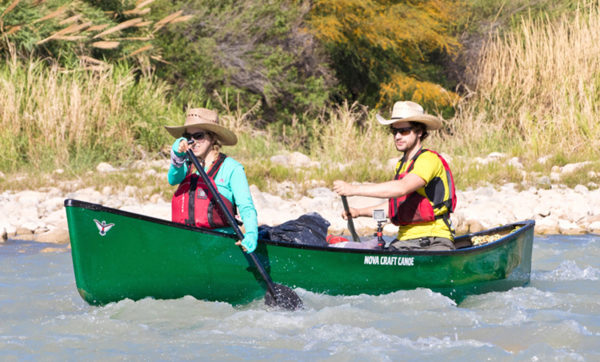
Leah and Brad in a Moisie on the Rio Grande. By David Lee.
Brad – We launched down the Rio Grande and water levels were low for the first stretch. We left civilization behind fairly quickly and entered the magnificent canyons of Boquillas Canyon. We spent our first night and our next 4 nights nestled beneath these 1,500 feet high walls– absolutely spectacular camping out there with nothing around. While you’re paddling you’re just craning your neck the whole time looking up at these canyons.
Along the way there was quite a bit of rapids but because the water levels were so low the rapids were very very bony. The guidebook told us that at the rate of river flow we were paddling we were better off just going home but of course, after all the time it took us to get there, there was no way we were going home. Even with loaded boats we didn’t have to walk. And by loaded boats I mean really loaded boats because we had to take many items that you wouldn’t normally need to account for in Canada. Because the river was low flow and there were so many technical rapids there were a lot of wall and cane shots. As the river bends around the corner, there’s only a small channel that you can take to run the rapid because the rest of the river is just gravel bar. So there’s this narrow channel pushing hard into the wall. Sometimes the best channel is to go right through the cane. As you know, traditional whitewater knowledge will tell you that you shouldn’t go through a sweeper but often on this trip they were the only flushing lines. Thankfully it’s fairly soft but you did sort of have to fight your way through it.
Also in those flows where the canyons takes an abrupt 90 degree turn, the water’s flushing into the wall and hurling back at you so your pretty much playing bumper canoes with the wall. I was really impressed with the stability and control of the boat (Nova Craft Moisie) in situations like that. I think other boats would have tipped that don’t have as much freeboard.
We finished the route at Johnson’s Ranch near Dryden, Texas. There’s a highway about 50km off the river to the north. Our shuttle driver picked us up there and we travelled down a dusty desert road towards the highway back to our vehicles.
And at times during the trip you were actually in Mexico right?
Brad – Yeah, the really interesting thing about the Rio Grande river is that it forms the border between the US and Mexico so essentially it’s a fluid border and at some points you’re in Mexico, at some points you’re in Texas. We probably split our time pretty evenly between the two countries. Mexico seemed to always be nice and shady just based on the direction of the river and the sun at the time by the time lunch was. So we would always have lunch in Mexico in the shade which was really nice.
Some of the nicer campsites midway through the trip had these gorgeous hot springs, like a private oasis in the canyons. The water’s not super hot but like warm bathwater at about 36 d Celsius. On the Mexican side, there’s a gorgeous crystal clear pool and people have built up a nice rock ring around in. So we sat in there for a few hours and just relaxed.
Technically you’re not supposed to camp in Mexico but there wasn’t really any suitable place to camp on the American side so just went for it. We did see the border patrol once during our trip however – three guys carrying heavy M16s and bulletproof vests. We just kept paddling and they let us go.
Now there are ranchers along some stretches on the Mexican side who let their cattle roam free, so a couple of times you might see ranchers which are like real cowboys. We definitely saw cows. If a cow crosses the river in the states it becomes property of the US government.
What’s different in terms of logistics for tripping across the border? Was there anything in your normal tripping gear you couldn’t bring across or thought twice about bringing?
Brad – Definitely the border is an issue because you can’t bring over any fresh food. That means we had to do a lot of pre-packaging of stuff and a lot of planning ahead, compiling a list of groceries to buy in the states. Otherwise most of the stuff you’d bring on a trip up here you can bring there too. If you have a firearm you can’t bring that obviously. Expect to spend a bit of time talking at the border though. You’ll get strange looks from the agents when you have two canoes on your roof in the dead of winter.
In terms of unique items that you wouldn’t normally trip with in Ontario, it’s really dependent on where you’re going. For example, when we went to the Adirondacks we didn’t need to bring these things because it’s very similar to what we’re used to. But we went to the Florida Everglades and the desert. They’re harsh environments where the resources we take for granted here, namely fresh water, is not available. In the Everglades it’s either saltwater in the ocean or brackish water inland. In Texas, the water in the river’s too silty and there are actually contaminants and e-coli from runoff a thousand miles upstream where the border towns are and all those cows roam. There are also traces of uranium naturally occurring in the bedrock there. So you have to bring your own water in if you want to paddle in either of those places. And it’s quite a bit that you need to bring, because you’re using it for drinking as well as cooking. Leah and I brought 5 or 6 jugs, big jugs which are 5 or 6 gallons each, and we were near the end of that supply by the end of the 9 day Rio Grande trip.
Wayne – Literally you’re taking as much water in weight as a third person, so you’ve got to account for that. It takes up a ton of space in the boat, I don’t know how you’d do it in a kayak. In a canoe you just got to get creative with your packing. We had four fair sized jugs and as you consume them you need to sort of shuffle the weight around so that its spread out evenly.
Another thing that comes to mind is a bug net. They have really tiny bugs in Florida called no-see-ums and sand fleas. We brought head nets that normally work great against mosquitoes and stuff up here but I found that they weren’t much protection against the no see ums. Next time I’d get that special extra fine mesh for bug protection. We didn’t have that and it was an issue for us.
The tide charts are also essential. And for the Rio Grande you need to bring a toilet system and a fire pan.
What kinds of wildlife did you encounter down there?
Brad – We were warned about poisonous snakes, spiders, panther, bears – but in terms of the most dangerous animal we saw out in Texas it was actually a bull. A male bull overseeing a herd of females is fairly aggressive. We came around a blind turn on a Class I rapid and there was a bull standing right in the middle of the river and we just started kind of hollering at it to scare it and get it to move out of the way. It didn’t move until the very last second, it was pretty nuts.
Campfire beneath the canyon walls.
Anywhere you travel in the backcountry there will be predators. Here of course there are bears, mountain lions, wolves, venomous snakes. In Florida there are venomous snakes too, but there are also lots of things lurking in the water. We take it for granted in Ontario that you can jump into a clear lake and nothing’s going to gnaw on your leg like a shark or an alligator would. The Everglades has three species of crocodilians: caymans (which are smaller), alligators (predominantly found in the brackish waters – interior lakes, and rivers) and crocodiles (which are really rare: there are only 2000 in Florida and they’re all found along the southern coast in saltwater only). But typically like any species in Ontario if you give them a wide berth then they’ll give you a wide berth. We never had any close encounters with them but apparently the alligators can be just as curious as a black bear stumbling into your site in Algonquin. You can do the same things to deter them, like making a lot of noise and banging your paddles. Always keep your distance and give the animal respect. Typically they’re just as afraid of you as you are of them so you can approach them with the same mentality that you would when backcountry camping in Ontario.
Major national and provincial parks can get kind of crowded during paddling season here in Canada…Did you encounter many other paddlers in the state and national parks you visited in the US?
Wayne – As far as the crowds go, obviously if you’ve done any camping up here you know that in order to get the choice sites you have to book months in advance. If you want the prime spots in Killarney and Algonquin you’ve really got to plan ahead. The way it works in the parks I’ve been to in Texas and Florida: you cannot pre-book. You can only book it the day of or the day prior which prevents people from booking all the sites up ahead of time. So when you get there, at the ranger station, you tell them the route you want to take and they basically plot it out for you where you’re not going to be on a lake or a campsite with a lot of other people, or, if there are others, they’ll tell you: “okay on this designated beach site, six people are allowed to camp there, right now there’s two others there or no others there what have you”.
The thought of driving all the way to Florida not knowing what sites will be available when you get there stresses me out a little bit.
Wayne – Yeah, but crowds have never been an issue. We asked the park rangers down there about it, and I think the only time you would run into an issue is a holiday weekend. People don’t paddle the parks the way we do here in Canada. They do, but it’s not the same level of intensity. Only once we ended up at a campsite with another group. That was at a double chickee so we had to share a platform with them which wasn’t a big deal. In fact it was kind of neat: you get to meet new people and these guys were Florida natives so it was nice to talk to some locals.
Anything else you want to add?
Wayne – It’s dirt cheap compared to Canada. Backcountry camping here nowadays I think its 12 or 13 dollars per person per night, which isn’t a ton but over a week it adds up. In the US it’s $15 for your permit fee which covers you the whole week and then its $2 per person per night, which is a lot cheaper, even in US dollars.
Brad – In terms of cost: Sure, our dollar sucks but gas is tremendously cheap. Even with the dollar conversion we were paying like 50c / liter. The most we ever paid was 80c / litre and at that time gas was 1.24 up here. The lower canyon of the Rio Grande was $14 per party for up to two weeks. There are also a couple of other fees they’ll tack on like a 10$ parking fee or whatnot but all in all it was cheap compared to our provincial and national park systems. The only issue is if you’re doing a shuttle, those can get expensive. We paid $900 for our shuttle service in Texas.
What’s left on your US tripping wish list?
Brad – The Green River in Utah; The Devil’s River and the Pecos River in Texas.
Wayne – I’ll go anywhere that Brad wants to go. I’d also like to paddle the Dry Tortuga National Park in the Gulf of Mexico; Suwannee River in Florida or some of the river systems where the manatees congregate; the Colorado river; Grand Canyon.
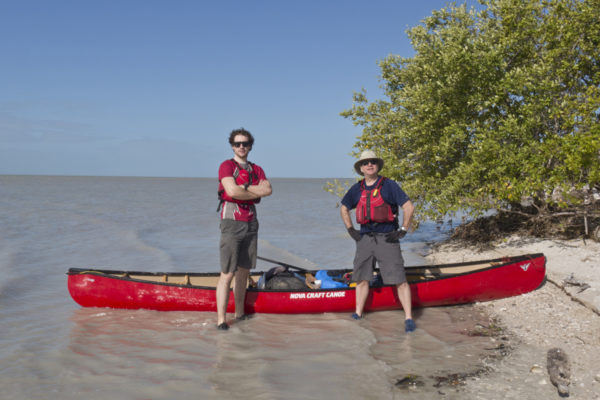
Brad and Wayne in the Everglades, 2017.
